| Roger Reini's Bahá'í Pilgrimage Journal | ||
| First
Attempt Prelude to Departure Departure for the Holy Land Day 1 Day 2 Day 3 Day 4 Day 5 Day 6 Day 7 Day 8 Day 9 Return Home Pilgrimage Home Page |
Day
2 December 25, 2007 I had set a wakeup call for 6 AM, for I had to be at the PRC by 7:15. It turned out I awoke around 5:15. It was still dark outside. The breakfast buffet started at 6:30, so I was able to partake of that. I sat in the lobby for a while, then set off. Eventually, I took a taxi to the PRC. Shortly thereafter, we formed up into our groups (I was in group D, English speakers, mainly from US, Canada, Australia and UK) and boarded the buses for our group trip to Bahjí and the Shrine of Bahá’u’lláh. The bus took us through parts of the city I had not yet seen until today. We got a wonderful overview of Haifa as we drove down Stella Maris, leading down from Mount Carmel. We made our way through the city streets and the construction near the port, then took the highway out of town towards ‘Akká. It was developed most of the way; I recall passing a couple of shopping malls, somewhat smaller than the American standard but possessing familiar American names like Office Depot and Best Buy (McDonald’s, too). To the east were the mountains of Galilee. To the west, ultimately, once we got close enough, was the Old City of ‘Akká. (note: these pictures in this first group are from day 3. We had been directed to refrain from any photography until we had completed our first visit to the Shrine of Bahá'u'lláh and to concentrate on preparing ourselves for that first visit. But the route was the same and so was the weather, so these pictures accurately reflect our journey this morning.) 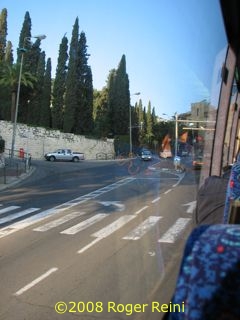 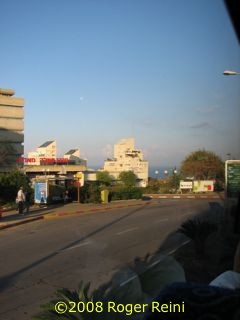 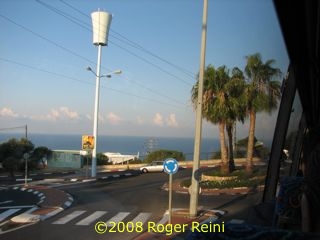 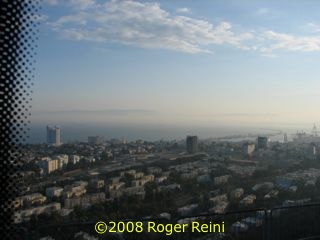 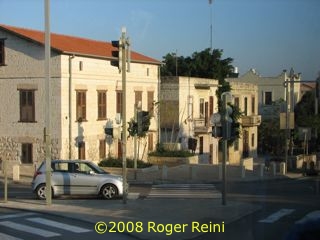 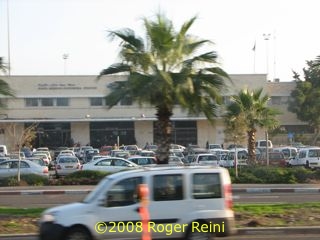 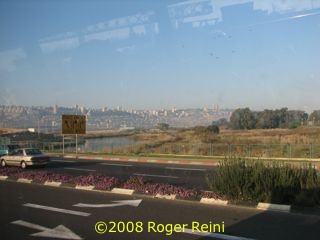 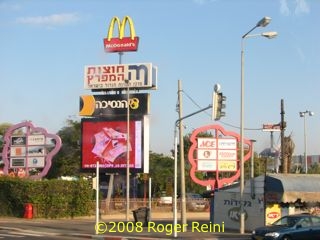 Our bus drove past a clump of trees. This, our guide said, was the Garden of Ridván. The white building was where Bahá’u’lláh stayed while in residence (His longest visit was 9 days). Eventually, we reached the grounds of Bahjí. The buses dropped us off at the Visitor Center, where we freshened up and prepared for our visit to the Shrine. I met two Canadian Bahá’i´s, Marie and Nicole [I would later learn they were mother and daughter] and an Oregon Bahá’í, Ruth. Then it was time to approach the Shrine. We walked as a group a short distance along the path, then turned to the right. And there it was: the entrance to the Shrine of Bahá’u’lláh. I had seen it in pictures before, of course, but never in person until now. I now knew that the entrance was on the north side of the building. We walked onward in silence and contemplation, broken only by our guide when he stopped us for a brief talk. We went onward, noting well the crunch of our shoes against the rocks of the path. Even the crunch of the stones might be a form of a call to God. I think the cawing of the birds near the Shrines was. We encountered the gates to the area immediately around the Shrine, known as the Haram-i-Aqdas, or Most Holy Court. I noticed that the color of the rocks [taken from the shores of the Sea of Galilee, I would later learn] had changed slightly. The gardens surrounding the Shrine were immaculate. At the entrance, we doffed our shoes, placed them and our bags off to the side, and went inside. 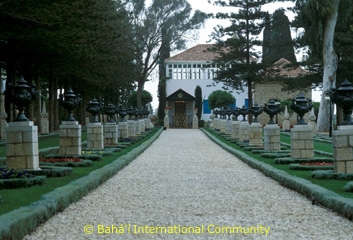 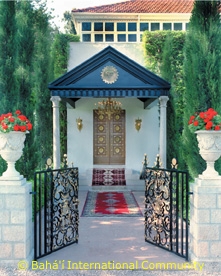 The largest room inside held a garden; it was lit by natural light from the windows all around the upper level. To the right and forward, there was an arch leading to another large room. Five raised thresholds signified five side rooms for prayer and contemplation. The sixth room was the Sacred Threshold, to the side of the arch (the right side). We filled in the rooms (the Sacred Room excepted, of course), meditated and prayed privately briefly, then listened with adoration as the Tablet of Visitation was recited. I was standing in the arched room facing the Sacred Spot, perhaps the only location where not everyone is facing the same direction, but all are facing the Qiblih. Later, I moved to a side room to offer the prayers on behalf of those on my prayer list, all of whom I specifically had in mind at the Shrine. It was not always silent; several times I heard the roar of Israeli Defense Force jets as they flew nearby. At one point, I realized I needed to get in line to visit the Sacred Threshold, so I did. I didn’t want to miss this bounty. While waiting, I saw a young girl, whom I would later learn was only 3, go up and bow at the Threshold. When her father came to get her, she seemed reluctant to leave. It is amazing to hear the Tablet of Visitation at the Shrines. The prayers also take on a more concrete quality when recited at the Shrines, such as the prayer that starts “O Thou Whose nearness is my hope...” To pray that prayer when you really are near the resting places of the Manifestations of God -- to pray ANY prayer when you’re near, actually -- all I can say is “Wow!” It may not be a very articulate thing to say, but the feeling almost transcends articulation. Go there and pray there, and you’ll understand. Or, for those who aren’t Bahá’í, go and pray in your most holy spot, and you’ll understand. Eventually, my turn arrived. I saw the rose petals lining the Threshold. I looked inside but could see little, owing to the darkness of that room compared with the brightness of the inner court. No need for me to see inside, though, to know Who was there. I bowed down and lay my forehead on the Threshold. Having heard a Writing on the way here that it is blessed to remember loved ones at the Shrine, I did. I reminded Him of the prayers I said -- not that He needed reminding. I could have stayed longer, but I was conscious that others deserved this bounty, and so I took my leave. I could and did back away safely, with no fear of tripping over anyone. As I left the Shrine, I retrieved my belongings, slipped on my shoes, then proceeded to circumambulate the Shrine via close paths. This took me between the Shrine and the Mansion. For some time, I had thought that the Mansion reminded me of Nassau Bay, Texas for some reason. Today, I figured out why: the architecture of the upper level reminded me of the old TG&Y store in Nassau Bay. Strange, but true! Circumambulation complete, I walked through the formal gardens, taking photographs only of a segment where a bird had lighted, in a direction not facing the Shrine. Then it was time to leave the Haram-i-Aqdas and retire to the Visitor Center. I passed two or three other pilgrim groups that had yet to experience the bounty I had just had. Marie Fortin-Kelly (one of the Canadians I met earlier) followed me, for she wasn’t sure which way to go. 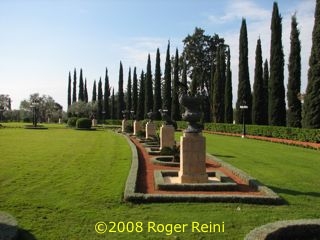 At the Visitor Center, I had orange juice and cookies. This was not freshly squeezed juice, but it may well have come from oranges from the grounds. Oranges were being squeezed there, too. I made sure to visit the men’s room before I left, for we did have to leave. As we drove off, I noticed what I thought was a rundown trailer park next door (it was actually a run-down army barracks). I did not see any cats on the grounds; I knew from pictures that a certain cat had been known to hang around, thus acquiring the name “Kitty Aqdas”, or the Most Holy Cat. From the road, I caught a glimpse of the Garden of Ridván, where Bahá’u’lláh would visit for up to 9 days at a time. I would later learn that, due to renovation work, we would not be visiting. The gardens were being renovated to restore the flow of water through them, as it was in Bahá’u’lláh’s time. We proceeded back to Haifa, taking a slightly different route into town when we got close. The bus stopped on Ben-Gurion Avenue, the PRC and the hotel district. I got off at the PRC, snacked on the water and cookies, then went over to the Shrine of the Báb for taking pictures and offering more prayers at the Shrine. The Shrine was much less crowded this afternoon. I made sure to specifically remember Hossein Kian’s request for prayers at the Shrine of the Báb. Then I went back to the PRC for a briefing from our guide. 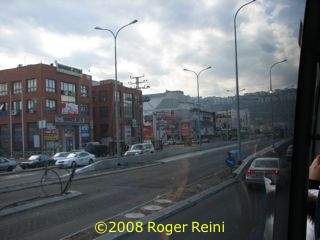 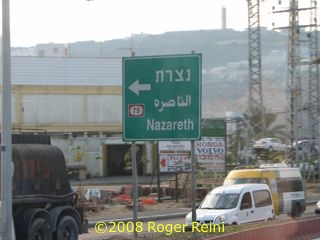 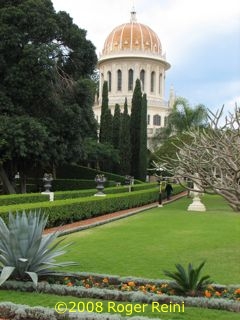 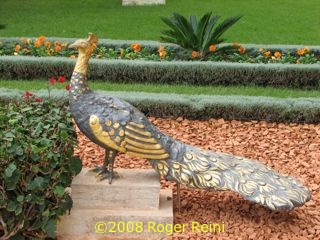 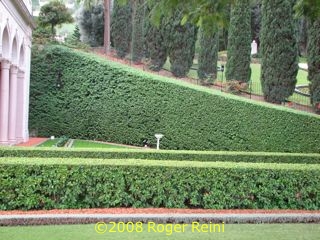 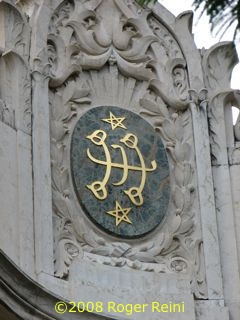 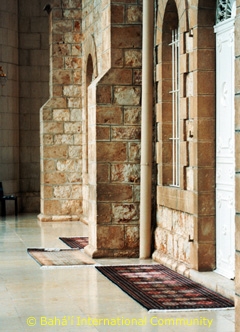 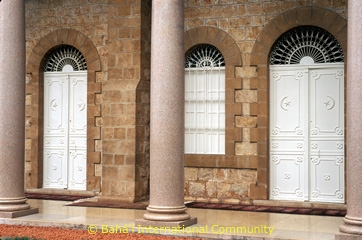 Our guide was Furio, originally from Italy. Our group D was composed of Americans, Canadians, Britons, Australians and at least one family from Macau -- all English speakers. He gave us some important instructions for us to follow while we were here. He told us that the buildings of the PRC used to be a medical clinic. Whenever Bahá’ís who were visiting fell ill, they were treated here, and the Guardian would come to visit them here. He gave us important info about the times the Terraces were open and that, if raining, they would not be open. He observed that, over the course of time, the center of pilgrimage activity may move to ‘Akká, for the concentration of holy sites there is greater, but not until more hotels become available. Shortly after 3, we proceeded as a group to the Seat of the Universal House of Justice, one of the magnificent buildings of the Arc. The classic Greek architecture reminded me of the Federal buildings in Washington, DC (most notably the Supreme Court), perhaps fitting given its governing body status. We left our overcoats and belongings outside, then proceeded in and took our seats in the main hall. At 4 o’clock, we rose as the eight present members of the House (the ninth, Hooper Dunbar, was traveling and unable to attend) entered the hall and took their seats. We were welcomed by the House and told to expect a wonderful bounty, but also a very personal experience. I must confess I had difficulty staying awake; the jet lag and long days had taken their toll. When the talk ended, each of the members of the House came to greet us in turn. I met 7 of the 8, missing the 8th because he’d started at the back of the hall, and I thought I’d met all of them by then. The one I missed was not Peter Khan, who remembered me (somewhat) from the dedication of the Washtenaw County Bahá’í Center in 2004. The gentleman from Danville, Illinois, standing by me was impressed that I had met a member of the House of Justice before; I explained that Dr. Khan had lived in Ann Arbor in the late ‘60s and early ‘70s and kept in touch with the activities of the friends there. 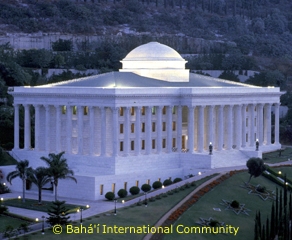 By the time I left the Seat of the House, it was dark. I returned to the PRC by the same route we took to get there, pausing to take a short video clip of the Terraces all aglow. My dinner started out as one of my energy bars, but Ruth Hall of Oregon offered me some of her cheese, olives and grapes. With thanks, I accepted. Later, Brian Crowley of Macau (originally Canadian) joined us. He and his wife run a language school (English) in Macau, and business was booming. I went over to the Annex and lay down on the couch for a while. I don’t think I fell asleep, but I did appreciate the rest. Then it was time to go to the International Teaching Center for a talk by one of the Counselors residing in the Holy Land. At these evening presentations, I would generally sit on the stage-right side; Wilson and Maria Ballard of south Texas would sit with me. NOTE: since the talks are intended for a Bahá’í-only audience, I won’t summarize them in this journal except if the content is not Bahá’í-only. At the conclusion of the talk, we left for our sheruts back to our hotels. At 5 shekels per rider, it was a bargain compared to taxi fare. Next: Day 3 Back: Day 1 Up: Pilgrimage Home Page DISCLAIMER: this is not an official page of any Bahá'í Institution. All comments are my own and derive from my personal understanding of the Bahá'í Teachings. For official information about the Bahá'í Faith, you may wish to visit www.bahai.org or www.bahai.us. Text and Video ©2008 Roger W. Reini. Photos ©2008 Roger W. Reini except where noted. Photos marked "© Bahá'í International Community" are reproduced with permission of the Bahá'í International Community (http://media.bahai.org/). Written
by Roger Reini |
|